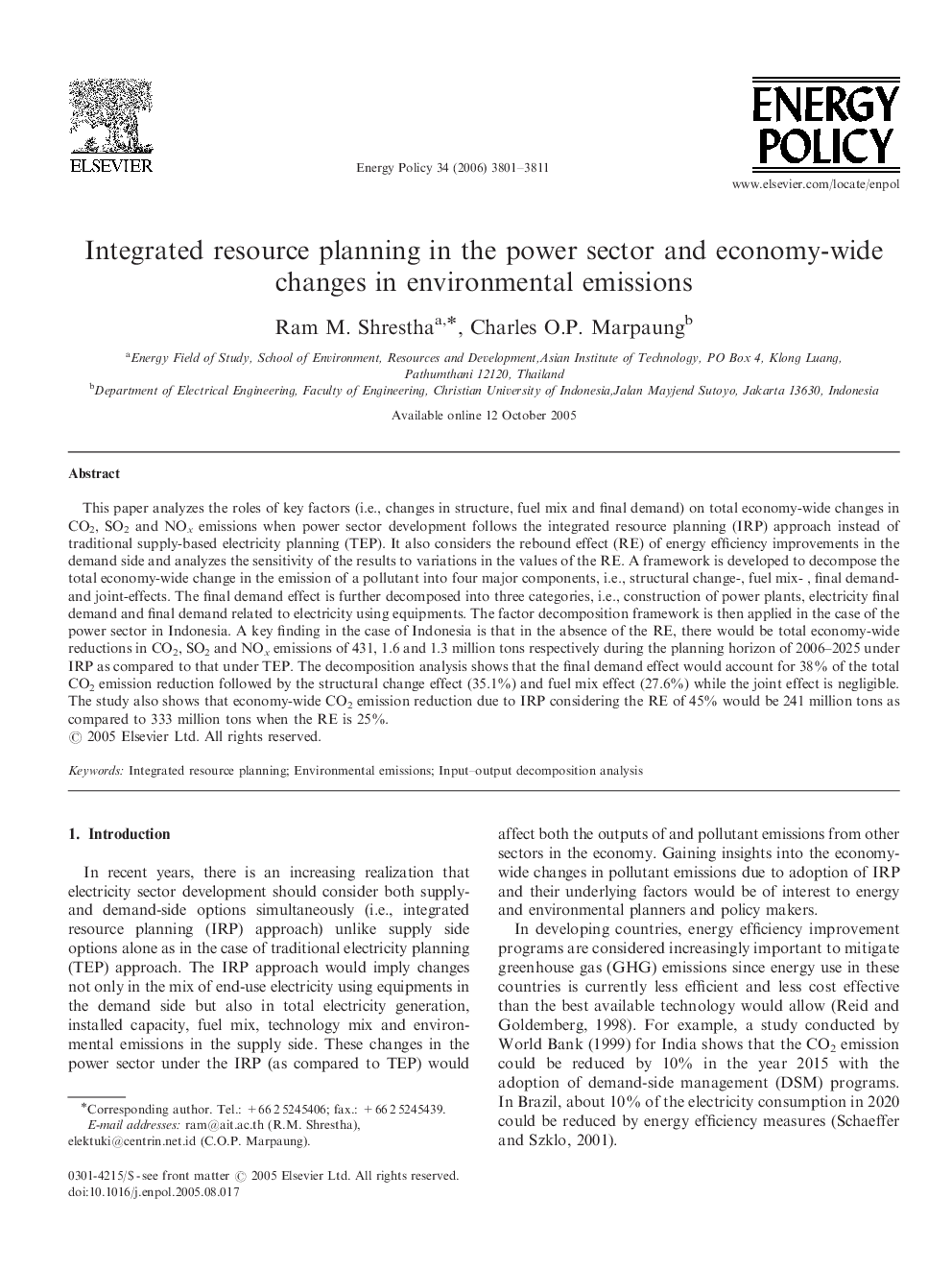| Article ID | Journal | Published Year | Pages | File Type |
|---|---|---|---|---|
| 996860 | Energy Policy | 2006 | 11 Pages |
This paper analyzes the roles of key factors (i.e., changes in structure, fuel mix and final demand) on total economy-wide changes in CO2, SO2 and NOx emissions when power sector development follows the integrated resource planning (IRP) approach instead of traditional supply-based electricity planning (TEP). It also considers the rebound effect (RE) of energy efficiency improvements in the demand side and analyzes the sensitivity of the results to variations in the values of the RE. A framework is developed to decompose the total economy-wide change in the emission of a pollutant into four major components, i.e., structural change-, fuel mix- , final demand- and joint-effects. The final demand effect is further decomposed into three categories, i.e., construction of power plants, electricity final demand and final demand related to electricity using equipments. The factor decomposition framework is then applied in the case of the power sector in Indonesia. A key finding in the case of Indonesia is that in the absence of the RE, there would be total economy-wide reductions in CO2, SO2 and NOx emissions of 431, 1.6 and 1.3 million tons respectively during the planning horizon of 2006–2025 under IRP as compared to that under TEP. The decomposition analysis shows that the final demand effect would account for 38% of the total CO2 emission reduction followed by the structural change effect (35.1%) and fuel mix effect (27.6%) while the joint effect is negligible. The study also shows that economy-wide CO2 emission reduction due to IRP considering the RE of 45% would be 241 million tons as compared to 333 million tons when the RE is 25%.
